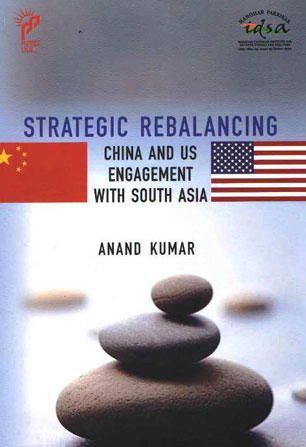Transforming Eastern South Asia: Relevance of BIMSTEC
Of late the Bay of Bengal Initiative for Multi-Sectoral Technical and Economic Cooperation (BIMSTEC) is receiving sincere attention from its member countries as an organisation that has the potential to transform the region’s political and economic future. This is because there are several bilateral and sub-regional ongoing projects that are seeking to connect the region and bind them together into one economic whole. Apart from this, after the cancellation of the SAARC (South Asian Association for Regional Cooperation) summit in 2017, many would see the BIMSTEC as an alternative to SAARC.
How Sri Lanka Walked into a Debt Trap, and the Way Out
Sri Lankans love to project their country as the land of serendipity. So, when the island country saw the back of a four-decade-old violent Tamil insurgency in 2009, it was expected that it would surge ahead in a serendipitous way. The turn of events ever since has, however, proved that the country has not been that fortunate. In fact, immediately after the conclusion of the war, Sri Lanka (re)lapsed into multiple crises, occasioned by a regime which functioned in an authoritarian manner.
India’s Bilateral Security Relationship in South Asia
The article argues that the contours of a security architecture are becoming slowly visible in South Asia. This process is nurtured by two developments. First, since the 2000s, India has increased its security cooperation with nearly all its neighbours in South Asia. Second, since 2013 governments in New Delhi have promoted the concept of India as a security provider in the region and the Indian Ocean.
Disaster Relief as a Political Tool: Analysing Indian and Chinese Responses after the Nepal Earthquakes
In the aftermath of the 2015 earthquakes in Nepal, China and India immediately sent relief teams. The relief efforts in Nepal showcase a competitive aspect of the two major regional powers, as China seeks to gradually increase its influence in South Asia. This article analyses how these two governments utilised relief efforts to increase influence in Nepal, within the wider context of the contentious Sino–Indian relationship. The Chinese and Indian relief responses after the Nepal earthquakes are extrapolated to assess their strategic utility.
The Challenges and Opportunities of a Negotiated Settlement in Afghanistan
For the last 15 years, the war in Afghanistan has caused hundreds of thousands of deaths and the United States has sent thousands of troops and spent billions of dollars supporting strategies that have been unable to curtail the violence in the country. In addition to deploying over 130,000 troops from 51 North Atlantic Treaty Organization (NATO) countries and its partner nations, the United States alone spent over $686 billion in the ‘Afghan war’.
What are India, Iran, and Afghanistan’s Benefits from the Chabahar Port Agreement?
Over the last decade we have seen a race to build ports in the Indian Ocean as the two Asian powerhouses, China and India, compete to assert their regional influence. The newest addition to this power struggle is the Chabahar Port, located in Chabahar, a coastal town in the Sistan–Baluchistan region in south-eastern Iran, next to the Gulf of Oman, and at the mouth of the Strait of Hormuz (Figure 1). Its strategic importance and economic value have drawn attention from many countries; however, India was the quickest to secure a deal to develop the port.
Sub-Regionalism in South Asia: A Case Study of the Bangladesh–Bhutan–Nepal–India Motor Vehicles Agreement
This article has two parts. The first part aims at analysing why nations are increasingly going beyond their multilateral and regional moorings to secure and advance their national interests. In doing so, why and how do they indulge in sub-regional engagements? It has been empirically seen across the board in almost every part of the world that sub-regional growth initiatives play a significant role in regional integration.
Assessing India’s Rise and the Road Ahead
This article analyses India’s economic, military and political rise in the international state system. It concludes that India is on the rise in all three power dimensions, underpinned by a larger share of global GDP. However, it also identifies the constraints on the way. On matters concerning its economy, India lags behind in industrial prowess, innovation, socio-economic development and financial strength. While modernising its defence capabilities, it faces obstacles due to budget issues, institutional constraints and a weak defence industry.
















